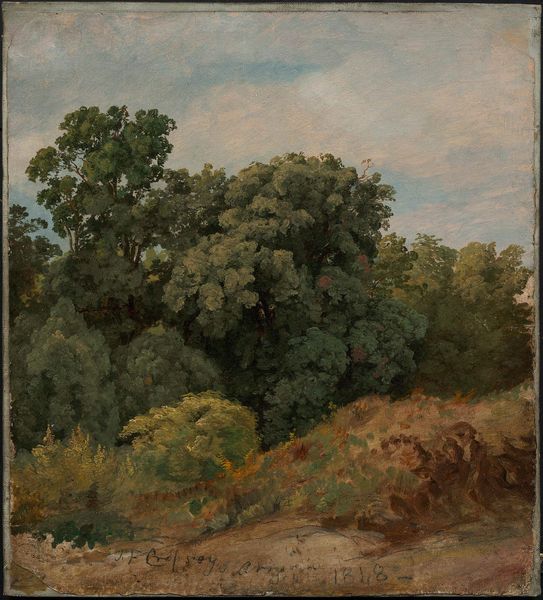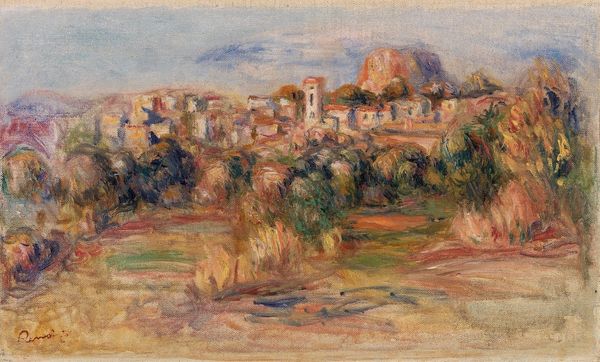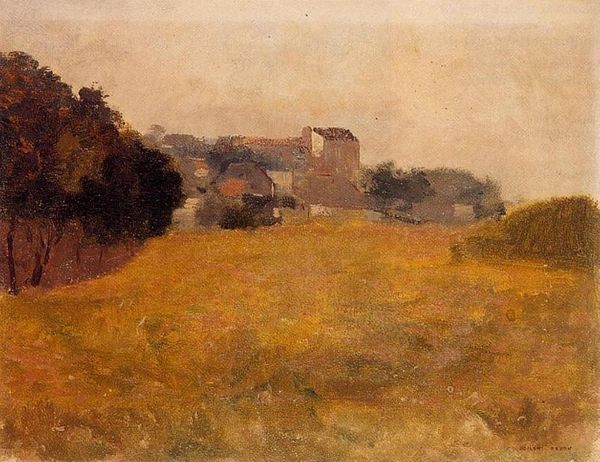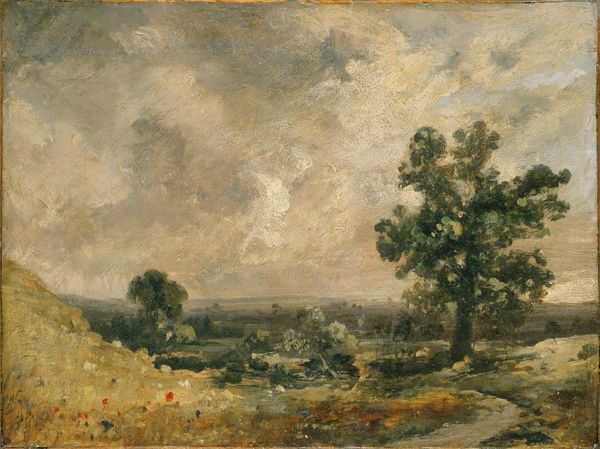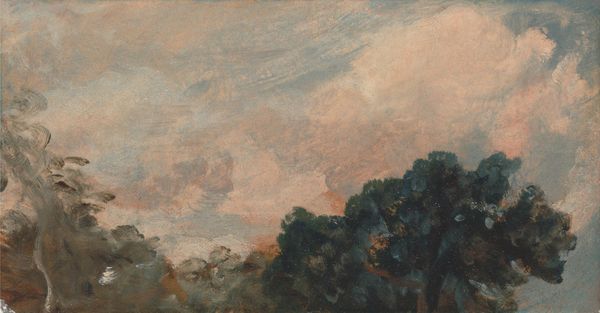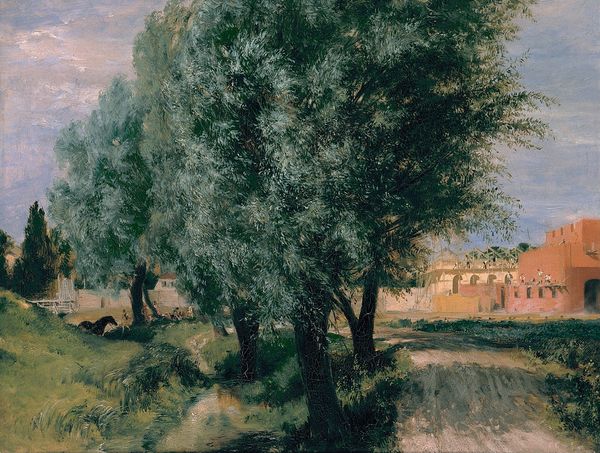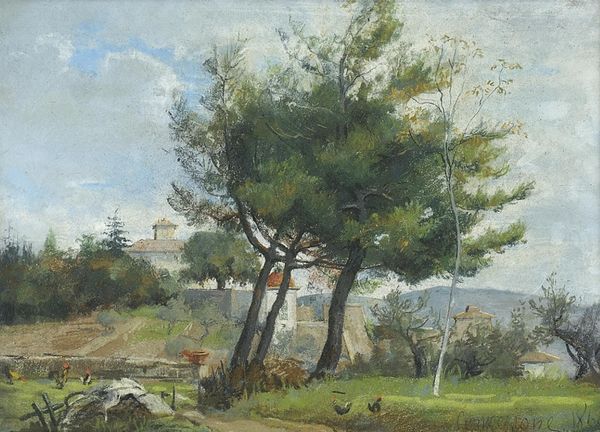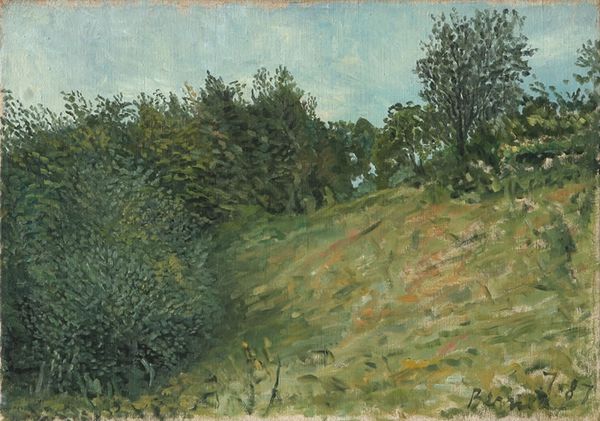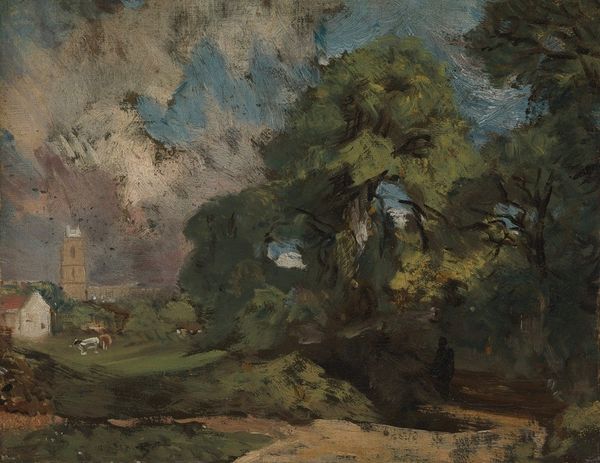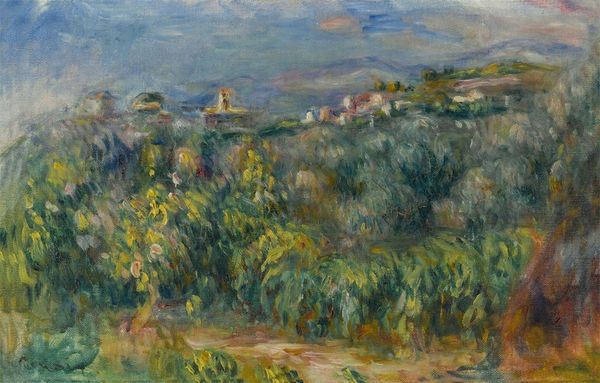
Copyright: Public Domain: Artvee
Editor: We're looking at Arnold Böcklin's "Landscape near Palestrina," painted in 1853 using oil on canvas. The colours are muted, almost monochromatic. The entire piece appears rather blurry, as if seen through fog, which I find strangely calming. What strikes you most about this painting? Curator: Its construction. Observe how Böcklin articulates space. Note the tripartite division of the canvas—foreground, middle ground, and a barely discernible background. The density of the application of pigment, what some might term "impasto," certainly contributes to this sense of layered depth. It is key to note that within that framework, Böcklin undermines traditional perspective. Consider the scale of objects; are they proportionately correct? Does this contribute to the calming sensation you mentioned, or to a sense of unease, perhaps? Editor: I think you’re right. There's a dreamlike quality, and that slight distortion of scale adds to it. So, rather than aiming for realistic depiction, Böcklin is manipulating form and texture to evoke a feeling? Curator: Precisely. Consider how the limited colour palette, dominated by earthy browns and muted greens, serves not to represent nature as it is, but to create a subjective experience. It transcends literal representation, focusing instead on a purely aesthetic effect, achieved through calculated manipulation of the picture plane. Would you say the brushwork reinforces this argument? Editor: Definitely. The loose, visible strokes contribute to the overall sense of haziness and abstraction. It seems every element is there to enhance the atmosphere rather than create a photographic record. Curator: A point well made. It reinforces how Böcklin’s interest lay in compositional and chromatic effect rather than topographic accuracy. The canvas reveals a world seen through a particular, carefully constructed, lens. Editor: I see it now; it's not about the place, Palestrina, but about Böcklin's formal exploration of space, light, and texture. Thank you. Curator: My pleasure. Always examine how the visual components – the lines, the colours, the textures – function independently of their representational role. This will give a new insight into every work you consider.
Comments
No comments
Be the first to comment and join the conversation on the ultimate creative platform.
